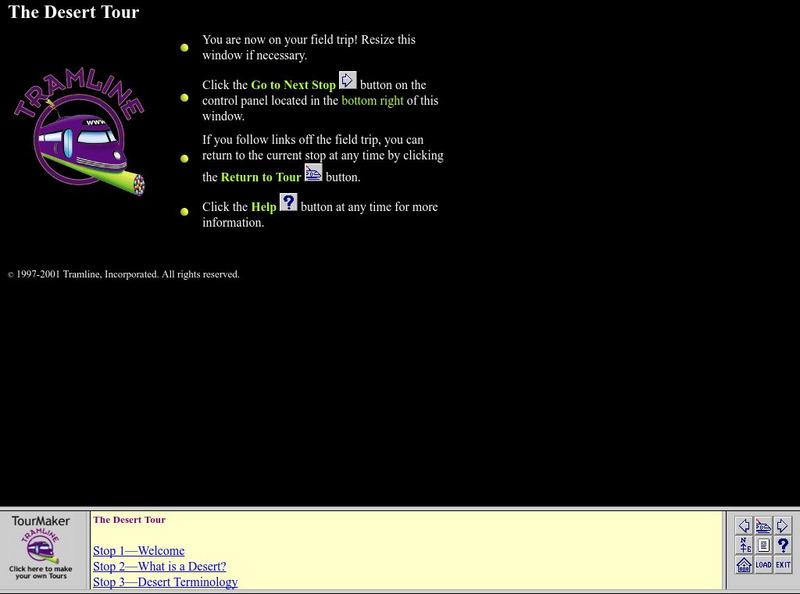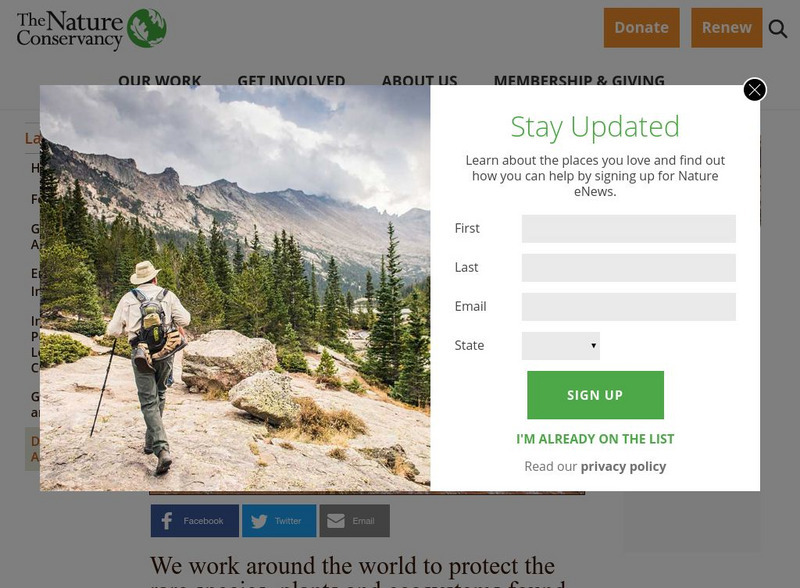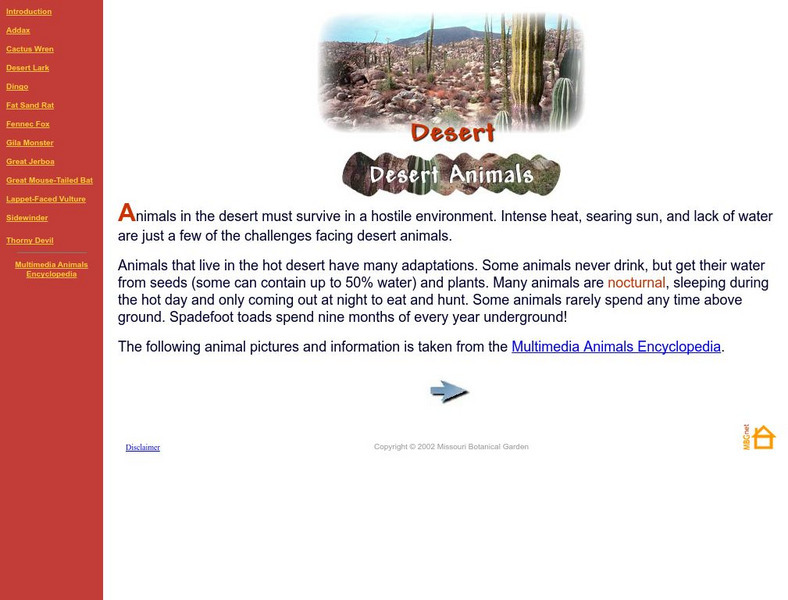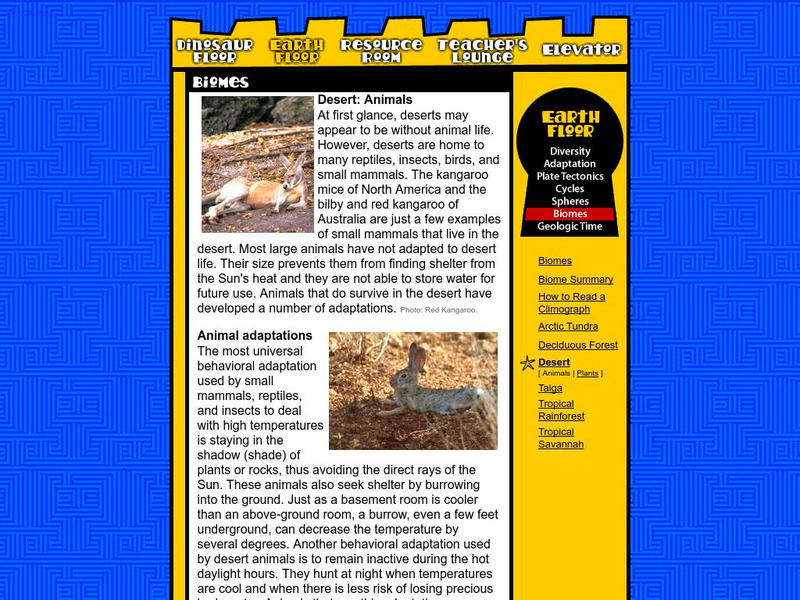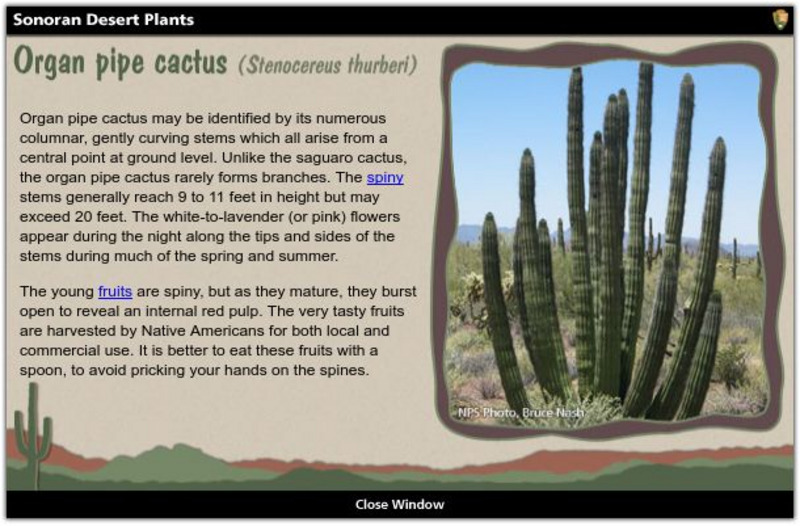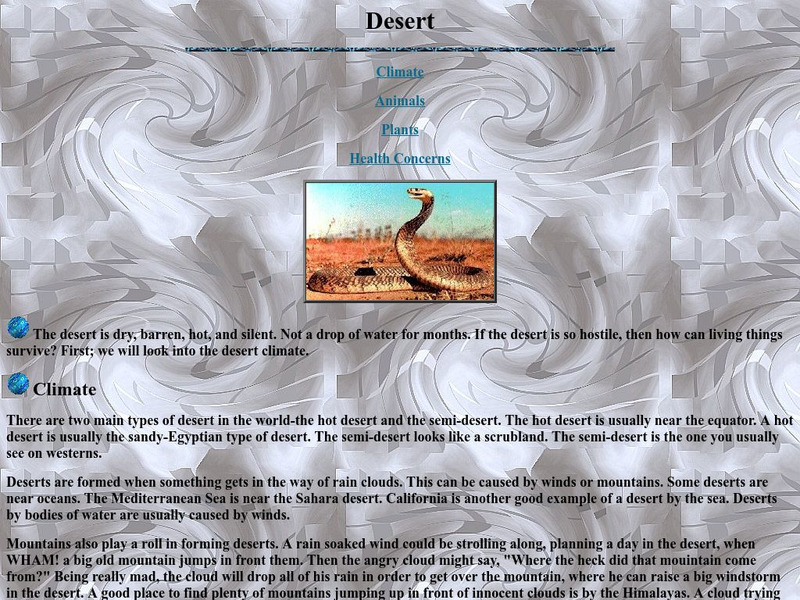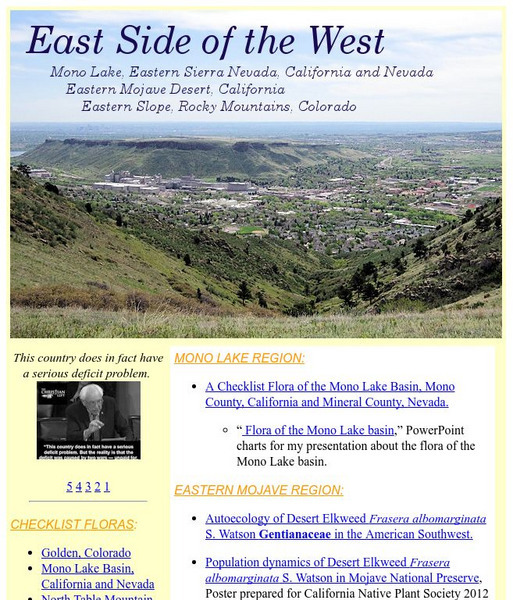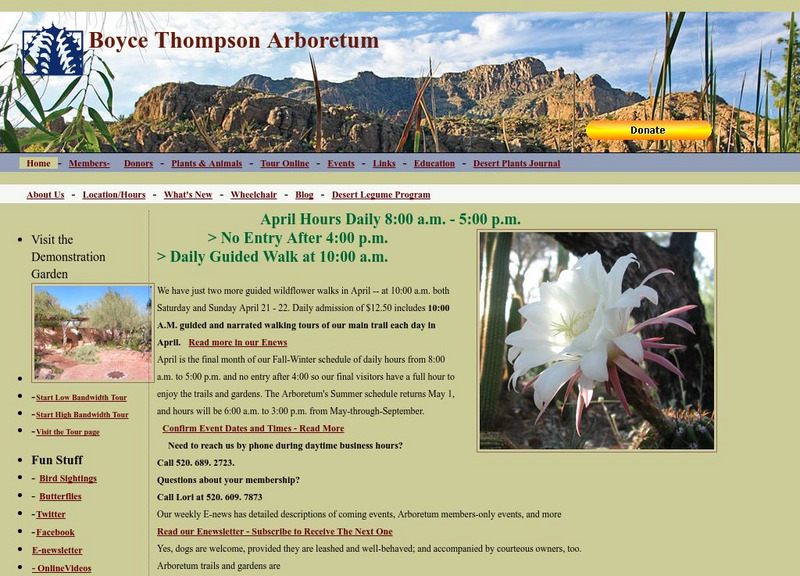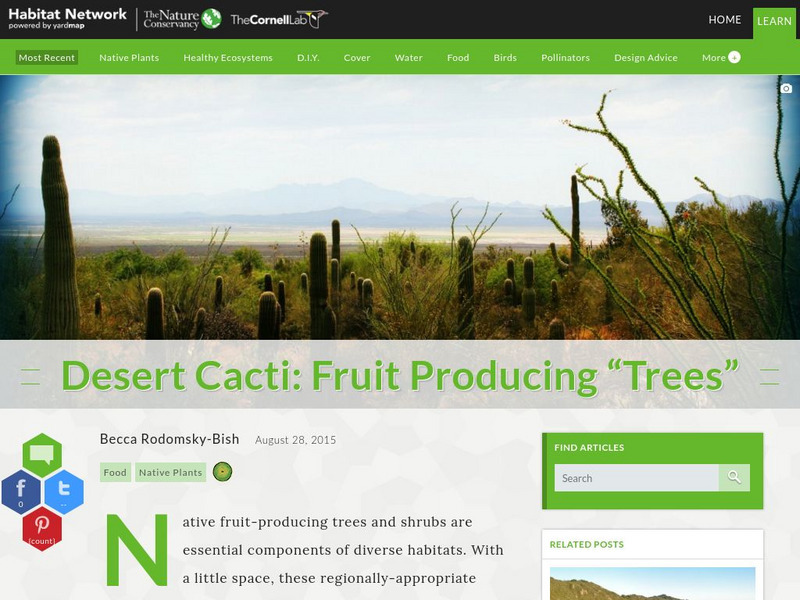Hi, what do you want to do?
Tramline
Desert Field Trip
Use this site to find out how deserts are formed, where the largest desert is located and if there are different types of deserts.
Center for Educational Technologies
Earth Floor: Biomes: Desert Plants
Site contains information on desert plants and plant adaptations. Offers links to biomes, a biome summary, how to read a climograph and more!
World Wildlife Fund for Nature
World Wildlife Fund: Our Earth: Ecoregions: Habitats: Deserts
An overview of the climate conditions of deserts. Includes examples of plants and the adaptations that allow them to survive in the dry climate. Includes a link to information about animals that live in a desert habitat.
Curated OER
National Park Service: Arches National Park: Plants
Information about the cacti, grasses, lichens, trees, shrubs, and wildflowers that grow in Arches National Park, located in Moab, Utah. Focus is placed on the adaptations of these plants that allow survival in a desert habitat.
Nature Conservancy
Nature Conservancy: Planet Earth: Deserts and Aridlands
The desert areas in the United States that this organization is working to protect are portrayed through photographs and videos, showing the beauty of the landscapes and the diversity of life forms there.
Missouri Botanical Garden
Missouri Botanical Garden: Animals of the Desert
Learn about different types of animals that live in the desert biome such as the cactus wren, the desert lark, the dingo, the fat sand rat, the fennec fox, the Gila monster, and so on. Animal pictures and information is taken from the...
Center for Educational Technologies
Earth Floor: Desert Biome: Animals
Site provides information on desert animals and animal adaptations. Offers links to desert plants and their adaptations, other biomes, and more.
Other
Arizona Sonora Desert Museum: How Plants Cope With the Desert Climate
Museum provides an article on how plants can cope with desert climate due to their three adaptive strategies: succulence, drought tolerance and drought avoidance.
Curated OER
National Park Service: Explore Nature: Views: Sonoran Desert: Organ Pipe Cactus
Snapshot reference on the Sonoran Desert organ pipe cactus describes its appearance, growth, and location.
Unite for Literacy
Unite for Literacy: Plants and Food: Great Green Giants
A picture book about a giant cactus called the saguaro. Includes audio narration in nine additional languages with text in English.
Other
Desert Gold: Desert Animals, Plants, and Rock Formation
This resource provides information about desert animals, plants, and rock formations.
Other
Thurston High School: Sharryl Lattion and Melissa Femrite: Biomes: Desert
Written for younger readers, this article reveals facts about animals and plants as well as health concerns for people in the desert environment.
Other
Tom Schweich Home Page: Vegetation in the Desert
This personal site features descriptions and photographic illustrations of California desert vegetation.
San Diego Zoo Global
San Diego Zoo: Carnivorous Plants
Learn about the characteristics, soil requirements, and prey of carnivorous plants.
Science Struck
Science Struck: Desert Biome: A Guide to Its Animals and Plants
Describes many of the plants and animals that live in deserts and their special adaptations that have enabled them to survive there. Also describes four types of deserts.
Science Struck
Science Struck: Mojave Desert Animals and Plants
Describes characteristics and adaptations of plants and animals that are able to survive in the Mojave Desert and a list of each.
The Wild Classroom
The Wild Classroom: Biomes of the World: Desert Biome
Learn all about the Desert biome. Find out about plants, animals, adaptations, and conservation efforts.
University of Arizona
University of Arizona: Boyce Thompson Arboretum
This Arizona-based state park features current information about its wildlife, wildflowers, plants and trees, gardens, and the like. Illustrated.
Cornell Lab of Ornithology
Habitat Network: Desert Cacti: Fruit Producing "Trees"
Find out why native fruit-producing trees and shrubs are essential components of diverse habitats.
Missouri Botanical Garden
Missouri Botanical Garden: Hot Deserts of the World
Find out about the sizes, physical features, and plant and animal life of some of the world's great deserts, including the Arabian, the Great Sandy, the Chihuahuan, the Kalahari, the Mojave, the Sahara, the Sonoran, and the Thar deserts.
Curated OER
Bureau of Land Management: Alaska's Cold Desert
Learn about the Arctic tundra biome of Alaska. A discussion of its characteristics, and the animals and the plants that live there.
Palomar Community College District
Wayne's World: Desert Varnish and Lichen Crust
Lichens thrive in common and in very specialized and inhospitable climates. This clickable index site offers text and photographs of desert and mountain lichens.
Utah Education Network
Uen: Trb 4:5 Investigation 1 Wetlands, Forests & Deserts
Learn about surface terrain and how plants and animals are affected by the temperatures and precipitation.
Utah Education Network
Uen: Trb 4:5 Investigation 5 Desert Dynamics
Fourth graders will understand how plants and animals adapt to their environment.
Other popular searches
- Life Cycle Desert Plants
- Desert Plants Life
- Desert Plants Activity
- Desert Plants and Animals
- Worksheets on Desert Plants
- Namib Desert Plants
- Namibia Desert Plants
- Australian Desert Plants
- Evolution of Desert Plants
- Desert Plants Experiments
- Desert Plants and Medicine





